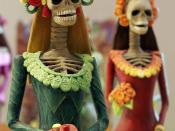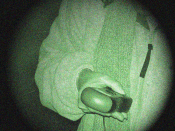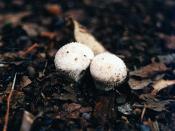"What the heck was that?!?" is a very familiar phrase to many. Was it just the house settling? Maybe it was a friend playing a prank. Or could it possibly have been a ghost? The latter choice is normally ruled out fairly quickly. But for some, it is very plausible. To prove or disprove the possibility of an apparition, a surprisingly scientific and frequently detailed investigation is carried out. Although the investigation has come a long way, it may never be proven that these steps and the information obtained by them are concrete.
The "ghost hunt" originated in the 1800's. In these days, it was not a true ghost hunt, rather an entertaining seance, picture, or show. Many people experimented with the invention of photography in this century. Making an eerie photograph was and is rather simple, but at those times the public was naive and unaware of these techniques.
They consistently paid money for fake ghost pictures.
Time has a way of exposing frauds, and such was the case with these deceitful photographers. Over the decades, genuine researchers and photographers sprung up. Because of the beginnings of their profession, they came under much scrutiny and still do to this day. But in the current century, ghost hunting is almost as scientific as physics. Ghosts are now normally categorized into one of three groups: a residual haunting, a spirit that lived as a human , or a spirit that never lived as a human (Killen).
A residual haunting is what a person has normally encountered when they say they have "seen a ghost." These types of hauntings are "residual energy that can come from a person, animal or even an inanimate object" (Wagner, 1). They are actually just like watching a movie playing an incident over and over. Because they...


